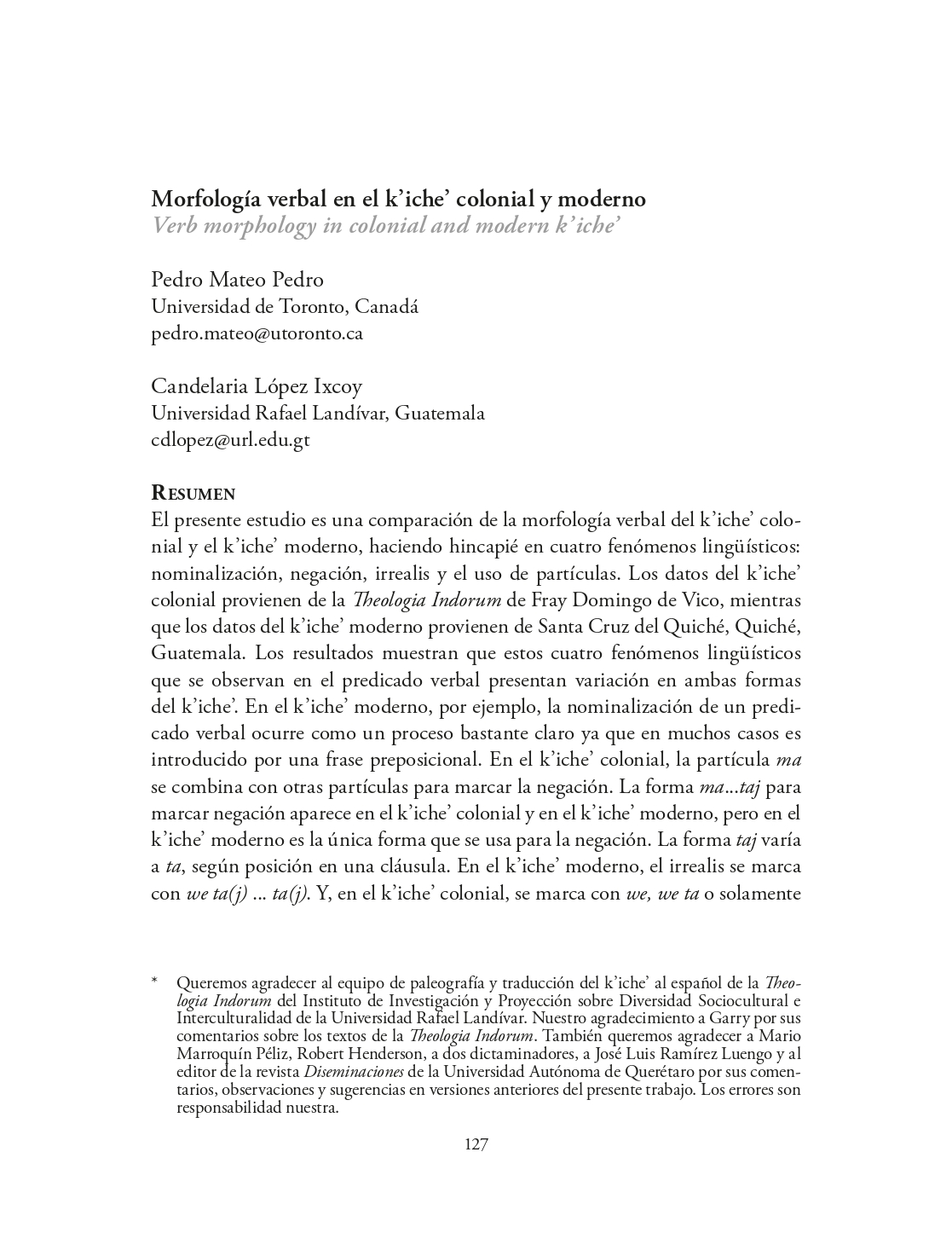Abstract
This study is about a comparison of the verbal morphology of colonial and modern k’iche’, emphasizing on four linguistic phenomena: nominalization, negation, irrealis, and the use of particles. The data of colonial k’iche’ come from the Theologia Indorum by Fray Domingo de Vico, while the data of modern k’iche’ come from Santa Cruz del Quiché, Quiché, Guatemala. The results show that these linguistic phenomena found in the verbal predicate present variation in both forms of k’iche’. In modern k’iche’, for example, the nominalization of a verbal predicate appears as a clear process given that in many cases it is introduced by
a prepositional phrase. In colonial k’iche’, the ma particle combines with other particles to complement the meaning of negation. The ma ... taj form also appears in the colonial and modern k’iche’, but in modern k’iche’ it is the only form used for negation. The form taj varies to ta, depending on its position in a clause. In modern k’iche’, irrealis is marked with we ta(j)... ta(j). And, in colonial k’iche’, it is marked with we, we ta or only taj. In modern k’iche’, the particle puch varies to pu, depending also on its position in a clause.

This work is licensed under a Creative Commons Attribution 4.0 International License.
Copyright (c) 2021 Diseminaciones

